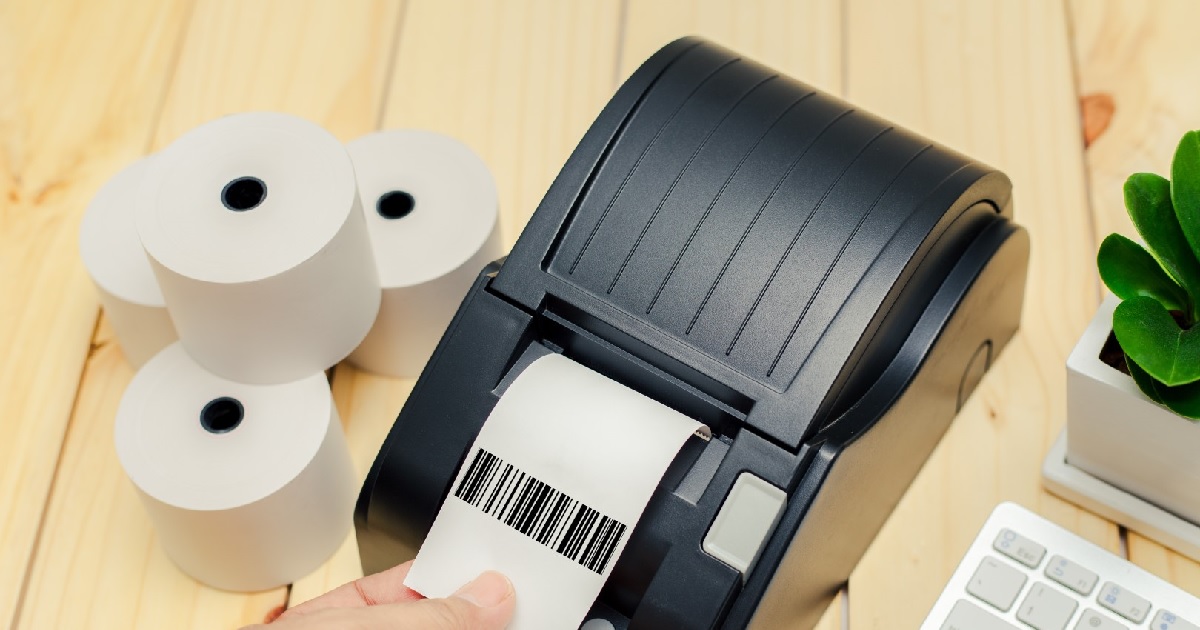Thermal rolls are a type of paper used in thermal printers, which create printed images through heat rather than ink. These printers work by applying heat to specific areas of the paper, causing a chemical reaction that turns the heated sections black, forming text or images. This technology eliminates the need for ink cartridges, making thermal rolls an efficient and cost-effective option for businesses that need to print regularly.
How Do Thermal Printers Work?
Unlike traditional inkjet or laser printers. The thermal rolls printers rely on the heat-sensitive nature of thermal paper. When the thermal printer head heats up and touches the paper, it activates the special coating on the thermal roll, causing it to darken. This process is faster than traditional printing methods and does not require any ink, toner, or ribbon.
Where Are Thermal Rolls Used?
Thermal rolls are widely used in various industries for different applications. Some of the most common uses include:
- Retail stores: Thermal rolls are used in point-of-sale (POS) systems to print customer receipts.
- Restaurants: They are used in kitchens to print order tickets and in front-of-house operations for customer receipts.
- Parking garages: Tickets and receipts are often printed on thermal paper.
- Healthcare: Hospitals use thermal rolls to print labels for prescriptions, patient wristbands, and lab results.
Benefits of Using Thermal Rolls:
The use of thermal rolls offers several advantages that make them a preferred choice for many businesses. Since thermal printers do not require ink, toner, or ribbons, businesses can save money on consumables. This reduction in overhead costs can significantly impact a business’s bottom line, especially for operations that require frequent printing.
Fast and Efficient:
Thermal printers are incredibly fast, producing printed documents in a matter of seconds. This speed is especially beneficial for busy retail environments where quick transaction processing is essential to customer satisfaction. Thermal printers have fewer moving parts and no need for ink or toner replacements, which translates into less frequent maintenance. This simplicity results in longer-lasting equipment with fewer technical issues.
Clear and Durable Prints:
Thermal printing produces crisp and clear text, which is important for receipts, barcodes, and other business documents. Moreover, thermal prints are less prone to smudging compared to ink-based printing, ensuring durability.
Environmentally Friendly:
With no need for disposable ink or toner cartridges, thermal printing is a more environmentally conscious option. This reduction in waste can contribute to a business’s sustainability goals. If you’re in the market for thermal rolls, there are several factors you should consider to ensure you choose the right ones for your business.
Size and Compatibility:
Thermal rolls come in various sizes, and not all are compatible with every thermal printer. Before purchasing, make sure you check the specifications of your printer to ensure you buy the correct size of thermal rolls.
Length and Thickness:
The length of the thermal roll determines how many receipts or labels you can print before needing to replace the roll. Thicker rolls may be more durable, but they also take up more space. It’s important to strike a balance between durability and practicality.
Paper Quality:
Higher quality thermal paper produces better print quality and tends to last longer. For industries where receipt longevity is essential—such as healthcare or legal documentation—it’s worth investing in premium thermal rolls.
Price:
While thermal rolls are generally more affordable than other printing options, prices can still vary. Shop around and compare prices from different suppliers to get the best deal without compromising on quality.
Core Size;
The core size of the thermal roll is another critical factor. Most thermal rolls come with a standard core size, but some printers may require larger or smaller cores. Double-check your printer’s requirements before purchasing.
Common Misconceptions About Thermal Rolls:
There are a few misconceptions about thermal rolls that are worth addressing. While it’s true that thermal prints can fade over time, modern thermal rolls are designed to last much longer. Some thermal papers are now coated to withstand exposure to light and heat, keeping prints clear for years.
Thermal Printing is Only for Receipts:
Thermal printing isn’t just for receipts! It’s widely used for printing barcodes, shipping labels, and even medical documents. The versatility of thermal rolls makes them suitable for a wide range of applications. Not all thermal rolls are created equal. They vary in terms of quality, durability, and compatibility. That’s why it’s essential to select the right type for your specific needs.
How to Store Thermal Rolls:
Proper storage of thermal rolls can extend their shelf life and maintain print quality. Here are some tips:
- Avoid Heat and Light: Store thermal rolls in a cool, dark place to prevent premature fading.
- Keep Them Dry: Moisture can damage thermal paper, so it’s important to store them in a dry environment.
Avoid Pressure: Stacking heavy items on top of thermal rolls can cause them to deform, making them difficult to use in a printer.
